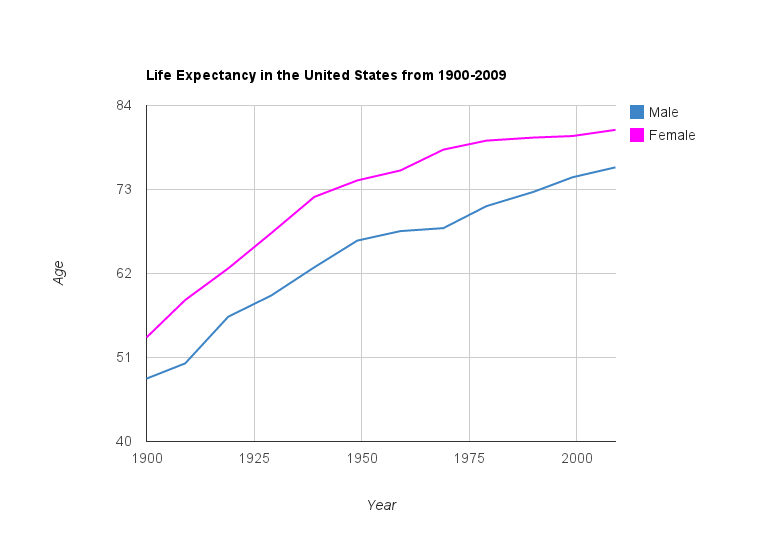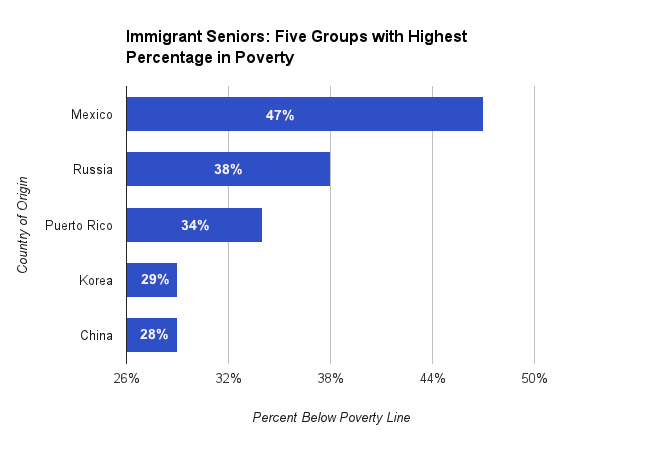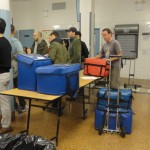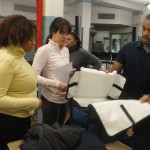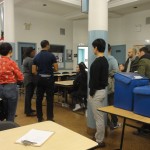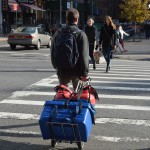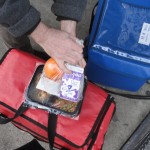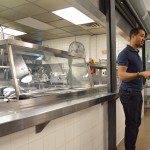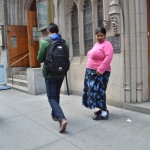Magda is a 91-year-old Slovenian immigrant living alone and independent in her two-story home in Queens. If you are walking down her street of brick row houses on a sunny afternoon you might see her slowly trimming her hedges. Catch her eye and she may flash you a grin and show you her Japanese maple tree. Her son visits her from Long Island every other Sunday, but during the week she walks around the corner to the grocery store, or the pharmacy when she needs something. Though Magda’s joints hurt her and she suffers from the occasional food allergy, she is relatively healthy and enjoys the independence of living in her own home alone. She acknowledges that modern medicine and technology have helped her live alone into her 90s. To get up and down the stairs to her basement, for example, she rides an electric chair that she controls from her seat.
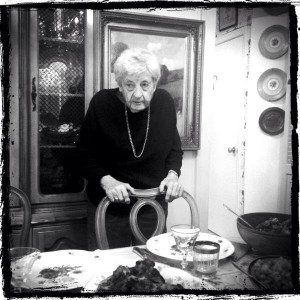
As science, technology, medicine, and diet advance, so does our life expectancy. In today’s day and age, many can boast about their great-great grandchildren, others reminisce on having served in WWII, or being at the 1964/65 World Fair in Queens. In the 19th century women often died during childbirth like Oliver Twist’s mother in Dickens’ novel, and it wasn’t uncommon that children died of disease long before reaching adulthood. At that time, there were little or no recourses for the majority of medical problems.
The 20th century brought us initiatives such as vaccination programs, the commercialization of antibiotic treatments, and education about nutrition’s importance in staying healthy, all of which resulted in dramatic increases in life expectancy. Explore some of these advances and their impact using the timeline below. There you can find history and context on where these breakthroughs have led us today, referencing the life expectancy predictions of the times. Also, review the graph below showing that the life expectancy of men and women has nearly doubled in 100 years, with women still outliving men an average of 5 years.
One important breakthrough was heart implants and artificial organ transplants developed in the late 1950s; technology that was later widely used to aid heart, bladder, and kidney functioning. If we can live comfortably with artificial organs, then what is stopping us from living indefinitely? Plenty of scientists are constantly asking themselves the same question. As evidence, a recent international collaborative effort to create a bionic man resulted in breakthrough in October 2013 when they introduced a robot that operates 60-70% of human functions through its artificial organs and limbs. Their goal is to understand the human body so well that they can re-create it and use that technology to advance medicine. Stem cell and genetic research have similar goals.
The elderly population is now the largest growing demographic in the country. The first wave of 50+ million baby-boomers are now entering their mid-60s and they’re living longer. Given these trends, urban planners and policy makers must adapt to meet the growing needs of the elderly. Magda’s hometown of New York City experienced a growth rate 12.4% of its elderly community this past decade, and between 2010 and 2030, that growth will be 45%. Immigrants account for a large segment of the elderly. Many do not speak English and require services that cross cultural and language barriers. Immigrant seniors also tend to be the most impoverished – more likely to be living under the federal poverty line and with fewer government entitlements. The following graphs provide a snapshot of the elderly population in the city.



Like Magda, many senior citizens live independently and prefer the comfort and safety of their homes over costly nursing homes where they risk mistreatment. Others may struggle with medical problems or disabilities and require assistance to sustain a comfortable life. Alis, for example, is currently a homebound senior citizen from Puerto Rico living in midtown Manhattan subsidized housing. Her apartment door is decorated with tinsel and a Santa Claus picture, and you can hear her birds tweeting behind it. Recently, back and leg pain left Alis homebound. With no living relatives, she is one of many senior citizens who rely on government delivery of meals on weekdays and Citymeals-On-Wheels meal delivery on weekends and holidays. “I spent Thanksgiving alone,” she said in a heavy Spanish accent, “because my family died. But I did eat my turkey meal and it was good.”
We met Alis on a weekend meal delivery run with Citymeals-On-Wheels, a non-profit in New York City that provides food services to the homebound aging community. Founded in 1981, the organization delivers meals to frail, and often isolated, elderly on weekends and holidays when government services are closed. Today, Citymeals feeds over 18,000 homebound elderly citywide. As the population they serves expands and diversifies they have worked with community centers to provide meals suitable to their needs. Some local community centers prepare Kosher food or Chinese food to meet community preferences. On our run, a few of the meal recipients did not speak English, and a large portion were not born in the U.S. For example, we met Jesus, an 86-year-old Cuban immigrant wearing a white tank top and a thin gold chain featuring a Virgin Mary pendant. He was married for 65 years to his wife, who died a few years ago. He said he is grateful for his children and boasted about being a great-grandfather. After having a companion so long, he explained that it is very difficult to find new companionship. Speaking briefly about his experiences in dating, he smiled and told us that, “All they want is my money! So I don’t date no more.”
Organizations like Citymeals provide critical services to New York City’s aging population. To learn more about CityMeals-on-Wheels, its mission, and the communities they serve click on the below link to a short video piece and take a look at the below photo gallery of the volunteer process.
[youtube]http://youtu.be/MpfWscBXYQQ[/youtube]
Organizations across the city provide other elderly services such as home-care, companionship, and computer training. Though New York City might seem like an overwhelming place to grow old, the accessibility of public transportation, grocery stores, pharmacies, medical care and entertainment make it very age-friendly. The city has eagerly supports NORCs, naturally occurring retirement communities where groups of elderly concentrate in a housing complex, often subsidized housing. NORC programs are often funded by city and state funds and provide on-site social workers, escort services to medical appointments, classes, workshops, and leisure events. For immigrant seniors, NORCs may provide a space convene with others who speak their native language. These self-organizing communities also make it easier for the city to serve them and at a lower cost to tax-payers.
Coupled with the services provided by the city and non-profit organizations, sensitivity to diversity and access to resources have left many considering NYC for retirement.
The growing costs required to serve seniors has significant political and policy ramifications. Politicians are careful to not curb elderly services or benefits due to the political power of the demographic. Resource and budget constraints pressure policy makers to seek creative ways to serve these communities as efficiently and effectively as possible. As our the aging population continues to grow, urban areas may want to follow NYC’s model and start planning progressive efforts for larger elderly communities so they can continue in their homes and live meaningful lives.
Produced by Julia Wilkinson and Kim Truong
